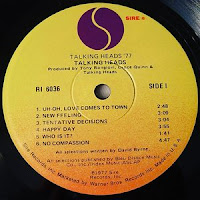Thoughts on business-to-business marketing communications, social media, website usability, public relations, project management, team building http://www.rogiercommunications.com
Tuesday, November 23, 2010
What Would the Talking Heads Say About Twitter?
Tuesday, November 16, 2010
5 Lessons Tap Dancing Teaches About B-to-B Marketing
Wednesday, November 10, 2010
When a Brown Bag Isn’t A Brown Bag

I just returned from a marketing communications planning meeting with a team of execs from a UK-based manufacturing company. It was a great meeting about the importance of a strategic approach to PR.
Watch Your Words!
As the discussion turned to topics worthy of announcements and news releases, it became clear that there is a distinct difference between UK and American “business-speak” and other vocabulary.
As an example, one of the company’s execs shared that in the UK, the term “brown bag” has a dramatic difference in definition than in the US. Here in the US, a “brown bag seminar” means a business meeting in which participants bring their own lunch, or “brown bag it” as they view an informative presentation. In the UK, however, the term “brown bag” conjures up visions of a homeless drunk on the side of the road. This is an important distinction when building a press release!
Never Say “Pants”
The term “pants” is also problematical. In the UK,"pants" usually refers to underwear- not trousers. The descriptive term "pants" is also used when referring to something that is of poor quality ("the movie last night was pants").
Business writing is also unique in the UK, where one will see terms like “whilst”; “heretofore”; “henceforth” and other words not often seen in business writing.
For Further Reading
The Project Britain blog on all things British life and culture offers a handy worksheet and vocabulary listing that translates UK and US terms.
PR builds trust and credibility. It is cost-effective way to validate a new product or service to the most people possible. The challenge is to get the word out/generate interest/awareness from unbiased, third party opinion, but to use the appropriate vocabulary!
I married into a UK family, so I understand these issues. I’m just grateful the team reminded me of these particular words. So far, I better remember to stay away from “Brown Bag” and “pants”!
Friday, November 5, 2010
Ask and You Shall Receive
It’s easy for a website project to get off kilter. Understandably, those on the web team have their own ideas of what works and what doesn’t work in terms of web design, features, navigation, content and so on.
Everybody on the internal team has an agenda, and a stake, when it comes time to building a website.
But for a business-to-business web project, whether you sell software or professional services or widgets, it pays big dividends to keep the typical, average user in mind. Why? If the goal of a website is lead generation, it should be extremely fast and obvious for a prospect to take action (sign up for a newsletter; follow social media; complete a contact us form). It should also be obvious, within seconds, what it is you sell. If it isn’t, your prospect will quickly click away.
What Do Your Prospects Think?
How would you know if your website is easy to use and navigate? You would ask your prospects. That’s right! You would seek out typical users and buyers of your product and ask them a few questions about the flow of the site, the navigation, the content and other key elements. Ask them informally - sit along side them with a few open ended questions and note what they do. (future blog post: ideas for a simple, DIY user testing project)
From design to content, the user can shed light on the following:
· Information architecture that matches the users' model of the information. Would your prospects be more interested in a menu list of your services, or do they want to see a description of how you serve their industry. How would you know this. You ask them.
· An intuitive navigation system to move people around this architecture. How would you know if the navigation was easy to use? You ask them.
· Chunked text, short and with liberal use of bulleted lists and highlighted keywords. Users scan, so content should support scan ability.
· Reduced use of jargon. Are you speaking the prospects language? How would you know this. You ask them
· Prioritized content availability – can your prospects find what is important to them? And how would you know what is important to your prospect? You ask them.
Parting Thought
Websites influence 97% of prospects’ purchasing decision. Doesn’t it make sense to take some time to ask a typical prospect if your website makes it easy for them to evaluate your product or service?




